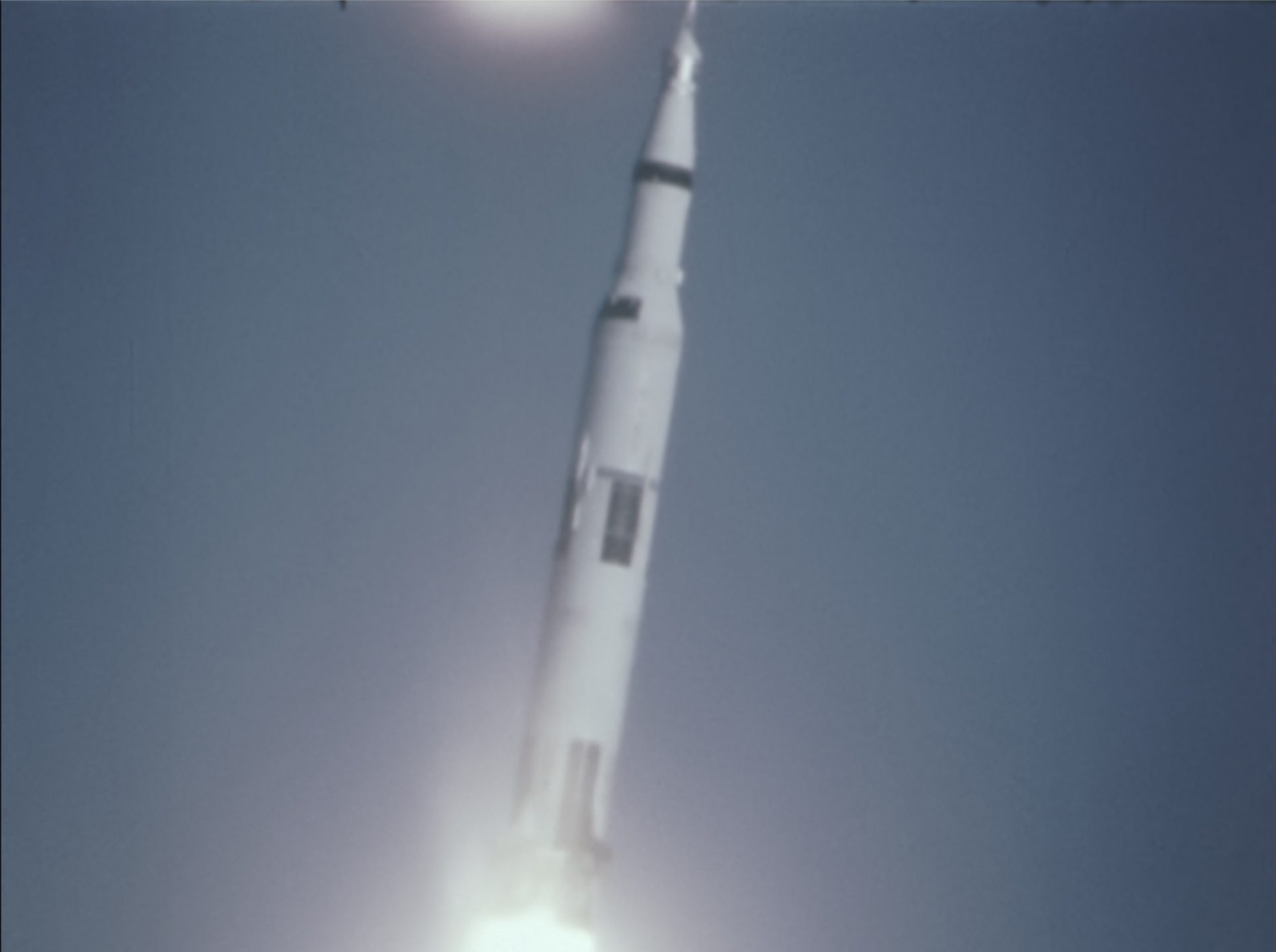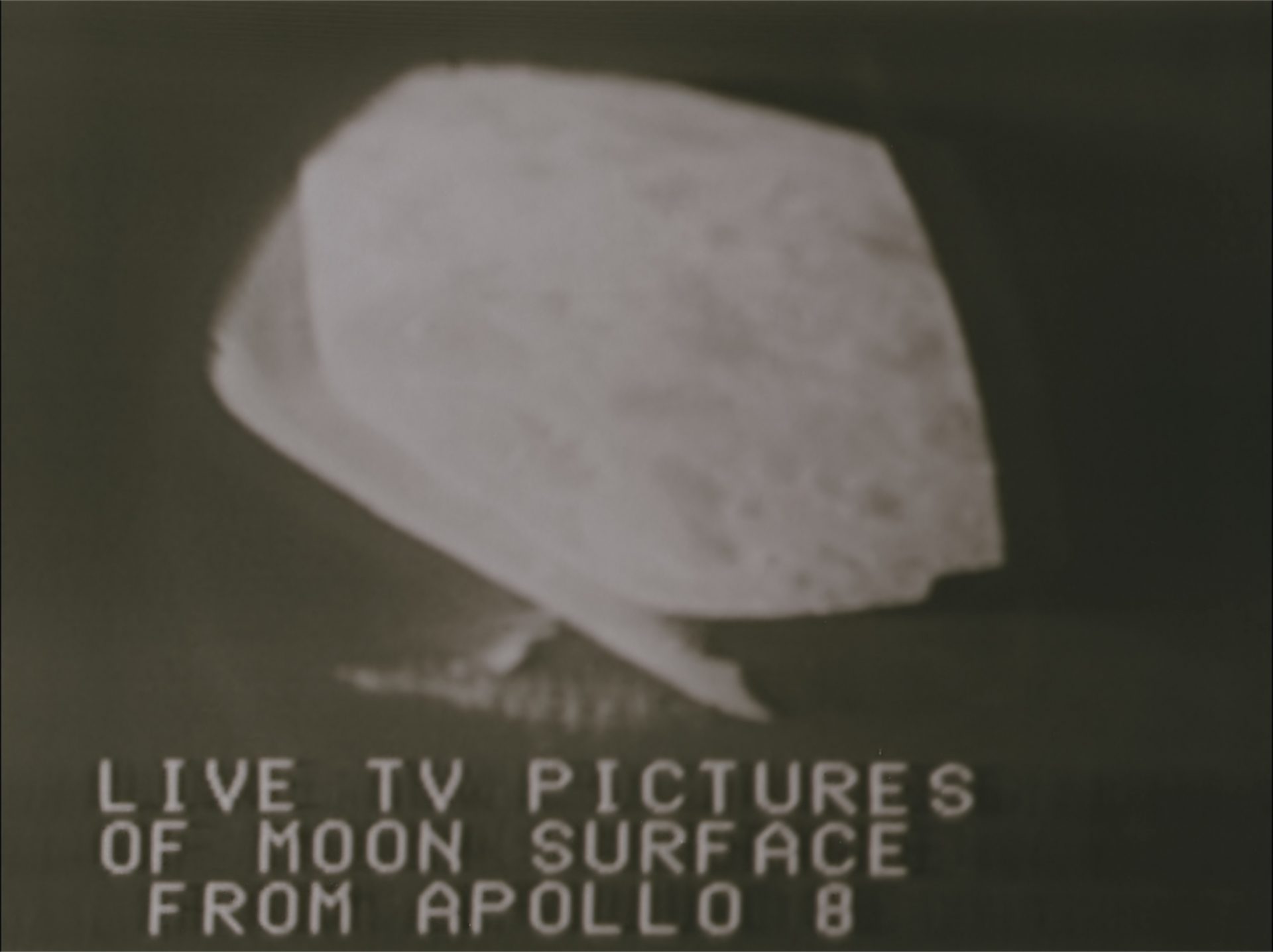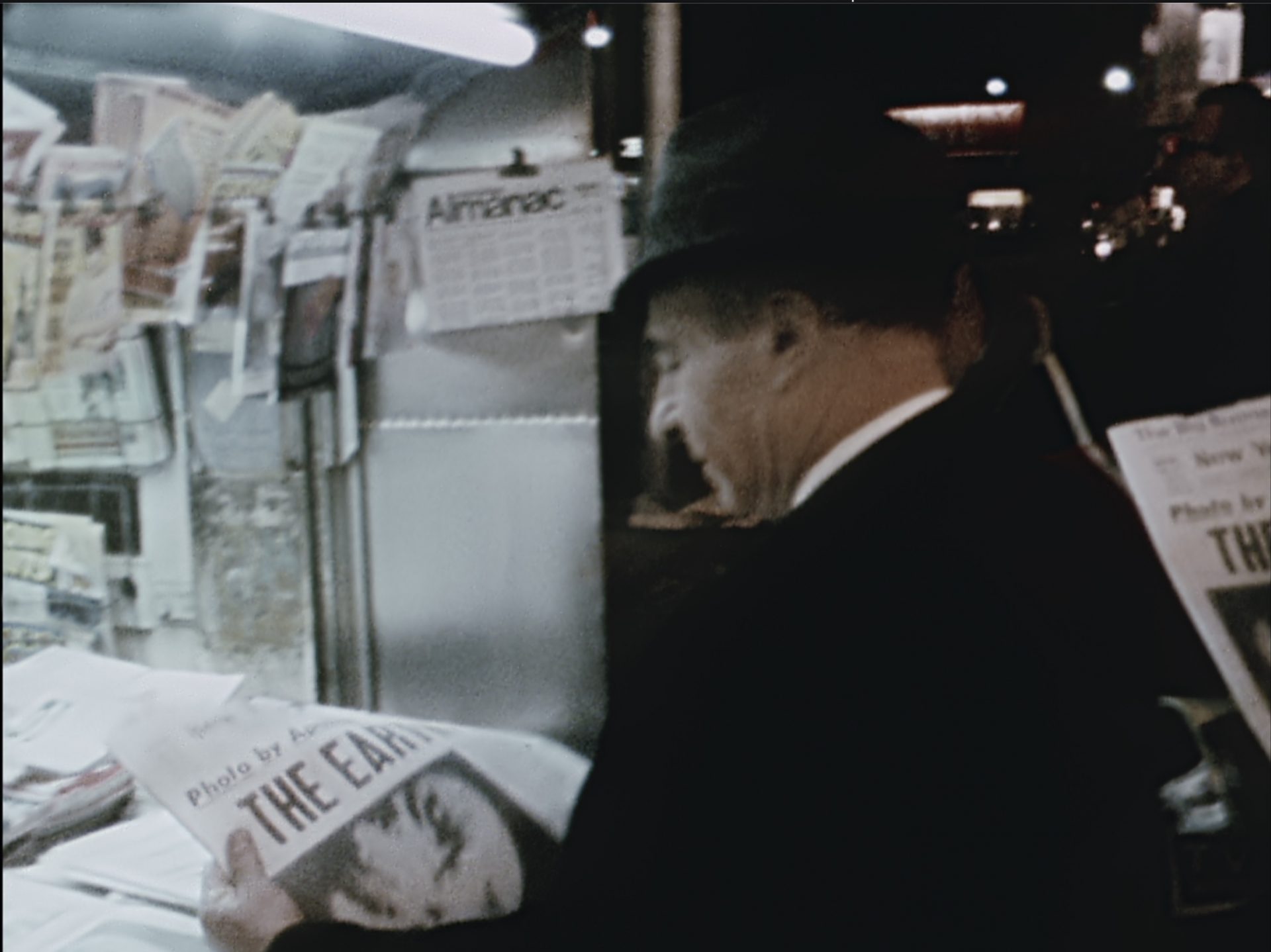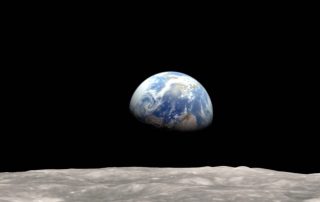Beethoven meets Apollo
Apollo 8
Apollo 8’s flight changed our view of Earth. The year 1968 has remained a symbol of change to this day. It is associated with student protests in the USA, England, Germany and especially in May 1968 in France. In 1968, the moon as a pole of calm became tangible from close range for the first time. The photo of the small blue earth in the infinitely black universe revolutionized our perception of our own planet.
In the USA the protests of the young Americans were ignited during the Vietnam War. Hundreds of thousands were sent to Vietnam in 1967 and 1968. The civil rights movement in the USA linked 1968 with the murder of Martin Luther King in the spring of the year. Thereupon the Black Power demonstration of Tommie Smith and John Carlos at the award ceremony of the Olympics in Mexico in October. And of course we associate 1968 with the Prague Spring and its suppression by Soviet tanks. 1968 was also the year of human rights with the manifesto of Andrei Sakharov. The pill brought the sexual revolution, a great liberation in dealing with each other. Hippies experiment with marijuana, LSD and hypnosis.
In 1968, the moon as a pole of calm became tangible from close range for the first time. Beethoven’s Moonlight Sonata provides the pictures with emotional depth.

A year of division
There is a crack in the societies of the western world. A rift between young and old. A crack between awakening and persistence. A rift between freedom and power. Between liberation and convention. Between pop and consumption. Between authority and revolt. The tensions are deepened by extreme ideologies. An urge for provocation and polarization. An experience of powerlessness and terror. But in 1968 other issues arose. Underdevelopment and hunger in the world, as in Biafra. Pollution of rivers and air.
It was a year of division and fighting, especially in the USA, where the Vietnam War escalated into a mad escalation. Because over 500,000 GIs are sent into jungle warfare. The sense for this fight with an enormous toll of blood has long since been lost.
The Apollo Lunar Program was the legacy of President John F. Kennedy, who was murdered in 1963. It was a program of extraordinary importance to the prestige of America. The Soviet Union was ahead of the Americans in space. Presented itself to the world as a successful high-tech nation to make its socialist development model particularly attractive to Third World countries. America wanted to catch up, the Apollo program must be a success.
In 1968 Lyndon B. Johnson, who had become president as Vice President of Kennedy after his assassination, took office. Presidential elections are scheduled for autumn 1968. John F. Kennedy’s brother applied for the Democrats. But Robert Kennedy is also murdered. America is politically disrupted.
The flight to the moon
In this situation, shortly before Christmas, on 21 December 1968, the spaceship Apollo 8 to the Moon departs. And at Christmas it is there. On 24 December 1968 at 09:49:02 UTC (board time: 68 hours, 58 minutes, two seconds) Apollo 8 disappears behind the moon and the radio contact breaks off. 9 minutes later, the engines must be automatically ignited to decelerate the spacecraft into orbit around the moon. If this does not work, the capsule is irretrievably lost in space and the astronauts are doomed to death. Fear minutes in Houston. Apollo only reappears 34 minutes after the interruption of radio contact. And everything worked.

The first orbit around the moon follows on an elliptical orbit and in various manoeuvres the crew aligns the capsule so that the cameras and windows are directed at the lunar surface. A few hours later, Apollo 8 sends its first images to Earth. The lunar surface, which slowly passed under the spaceship. And then earthrise. “Oh, my God! Look at that picture over there! Here’s the Earth coming up. Wow, is that pretty!” Frank Borman says. Only after some back and forth with Borman and Lovell does crew member Bill Anders finally shoot the historical photo, which was not included in his recording program.
Today it is said that this image has changed the way we humans see the Earth. As a teenager in 1969, I had hung up a poster with the photo in my room. Without thinking much about what it might mean. Surely some may have experienced in this picture how small and special our blue planet is in the infinite black expanse of the universe. And soon afterwards the picture came back. 1972, as cover picture on the report of the Club of Rome about the limits of growth.
The film footage
The pictures from 1968 were taken from a NASA film, thus showing the perception of the directors at that time. The original sounds of the astronauts were digitized by NASA tapes.
“Here is Apollo 8 with a live broadcast from the moon. We switched the camera. First we showed them a picture of the Earth as we have seen it the last 16 hours. Now we switch so that we can show them the moon over which we have been flying for 16 hours at an altitude of 60 miles. William Anders, James Lovell and I spent Christmas Eve up here experimenting, taking pictures and keeping the spaceship with the engines in position. We will now continue our course as we have all day and take you to a sunset on the moon. The moon means something different to each of us. I think each of us will take his own impression of what he has seen today… I know my own impression is that of a vast, lonely expanse of nothing. It looks like clouds over clouds of pumice. And in any case, it doesn’t seem very inviting as a place to live or work.”
Reading from the Genesis
On Christmas Eve, astronauts Anders and Borman read from Genesis.
“We are now approaching the lunar sunrise. And for all the people down on earth, the crew of Apollo 8 has a message that we want to send you: In the beginning, God created heaven and earth. And the earth was desolate and empty, and it was dark on the deep. The Spirit of God hovered over the water and said, “Let there be light. And there was light. And God saw that the light was good and God divided the light from the darkness”.
“And God called the light day, and he called the darkness night. Then the evening and the morning became the first day. And God said, Let there be a vault between the waters, which divide between the waters. Then God made the vault, and separated the water under the vault from the water above the vault. And so it happened. And God called the vault heaven. So the evening and the morning became the second day.”
“And God said, Let the waters of the heavens be gathered together in special places. Let dry land appear. And so it happened. And God called the dry land earth, and the waters he called the sea. And God saw that it was good. And from the crew of Apollo 8: “we close with a Good Night, Good Luck, Merry Christmas and God bless you all – all of you on the good earth”.
Did the Christmas message have any effect? 500 million television viewers in all parts of the world followed the live images of the moon. And the Earthrise-photo has changed our perception of the earth. In America the space euphoria awakes again, and the 7 months later following successful moon landing lets forget the Vietnam debacle for a short time. But the disillusionment comes already in autumn 1969. We can solve the problems of the earth only on this earth. A space travel escapism remains an illusion, then as now.


